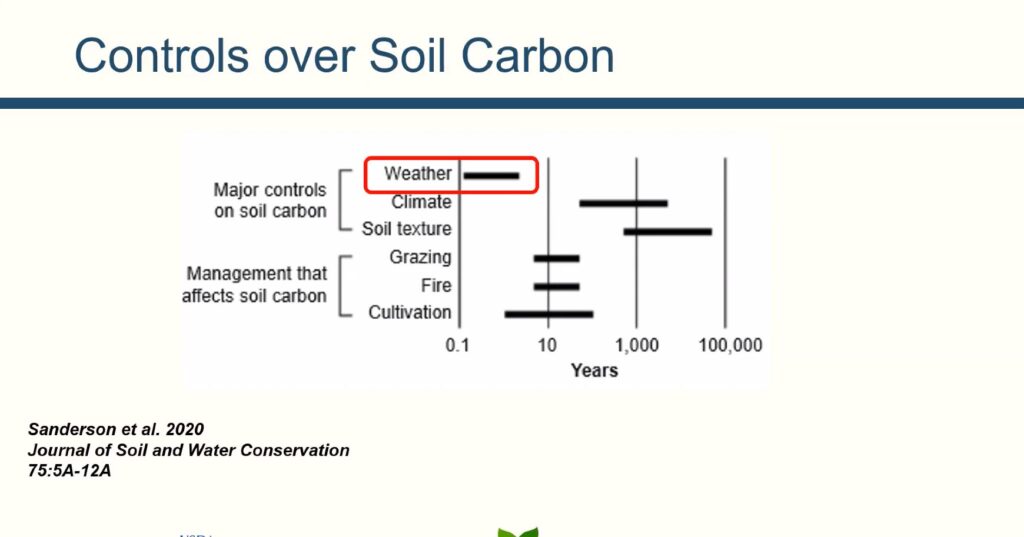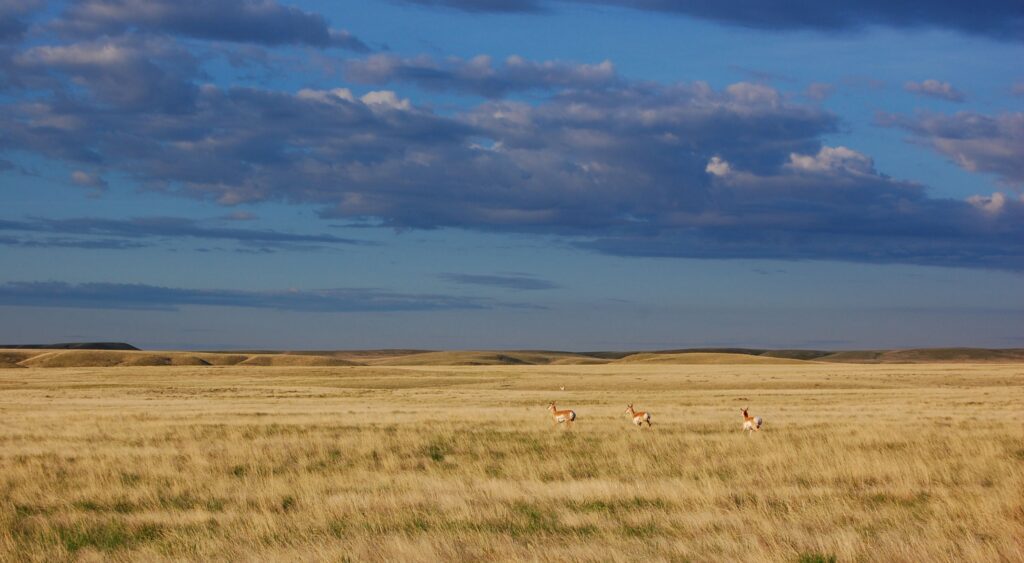Dr. Justin Derner is a Research Leader and Rangeland Scientist at the USDA’s High Plains Grassland Research Station in Cheyenne, Wyoming. Recently, Dr. Derner presented the eighth webinar in an 11-part series called Grazing Land Management and Soil Carbon. The topic of his talk was “Grazing land management and soil carbon: Results and insights from the Western Great Plains”, a region that extends from Montana and North Dakota to New Mexico and Texas in the continental U.S.
Why the Western Great Plains is Different
Previous webinars in this series examined the relationship between grazing and soil carbon in Florida, North Carolina, and Kentucky. The Western Great Plains is significantly drier, but there are other important differences as well. For example, this semi-arid region has a long history of grazing by native species such as bison. The Western Great Plains also has a history of grassland fires, and prairie dogs affect soil quality through digging and burrowing.
Today, the Western Great Plains consists mainly of shortgrass prairie, especially blue grama grass that is typically less than 6 inches (15 cm) tall. In this largely tree-less ecosystem, 94% of organic carbon is below ground. In the short-term, weather has the greatest effect on soil carbon levels. Across longer time horizons, land management activities such as cultivation and grazing have a greater effect. After approximately 1,000 years, soil texture plays a major role.
To illustrate these points, Dr. Derner compared the wet year of 1999 with the drought year of 2000 and reported a high degree of variability in the exchange of carbon between soil and atmosphere. He also shared data that showed how soil carbon accumulates during the growing season and is then lost during the dormant season. Because his study dated back to 1982, Dr. Derner was also able to describe soil carbon changes over time across four sampling events on two one-acre test sites.

What Affects Soil Carbon Levels?
In the Western Great Plains, the relationship between grazing and soil carbon levels is affected by soil depth, land management practices, and time. For example, across decades of study, grazing did not influence soil carbon levels at 8-inch depths. At 24-inch depths, soil-carbon levels between lightly grazed and heavily grazed areas were similar. Yet soil carbon levels were higher in heavily grazed areas than in ungrazed areas during a 12-year period of study.
Weather, and not just grazing practices, also has an important role to play. After 21 years of grazing, including several years of below-average precipitation, soil carbon was 30% lower in heavily grazed areas. After 31 years of grazing, including several more years of below-average precipitation, light grazing was associated with an 18% reduction in soil carbon levels.
Although Dr. Derner did not state this in his presentation, soil moisture is a major factor in the accumulation of soil organic carbon. That’s because soil moisture affects inputs of organic carbon from the atmosphere and influences plant production and decomposition rate. By sharing data from decades of study in the Western Great Plains, Dr. Derner’s presentation strengthened the already-impressive Grazing Land Management and Soil Carbon series.
